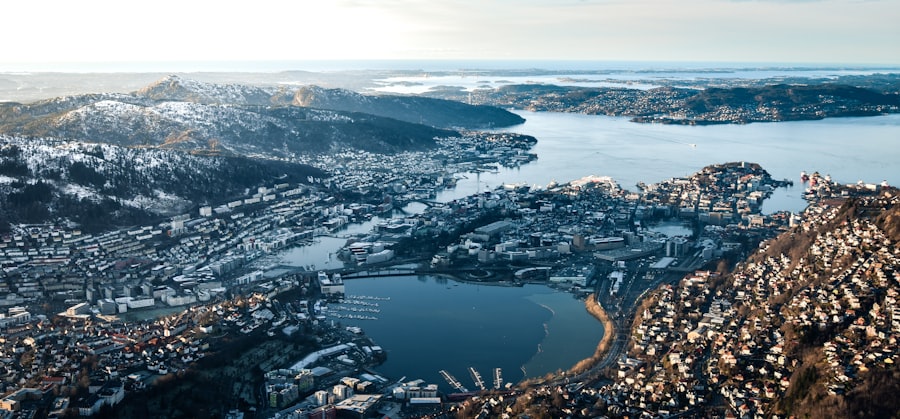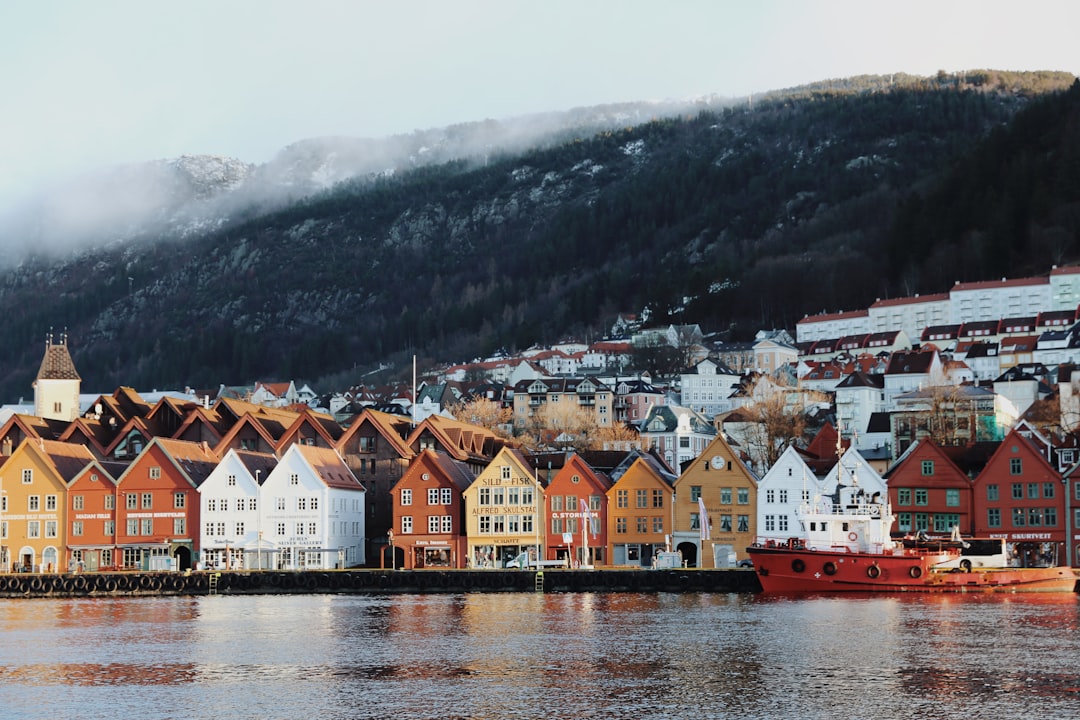Kristi Himmelfartsdag, or Ascension Day, has its roots deeply embedded in Christian tradition, commemorating the ascension of Jesus Christ into heaven, as described in the New Testament. This event is believed to have occurred forty days after Easter Sunday, marking a significant moment in the Christian liturgical calendar. The observance of this day can be traced back to the early Christian church, where it was celebrated as a feast day.
The name “Ascension” itself derives from the Latin word “ascensio,” which means “to ascend,” reflecting the core event that this day represents. In Norway, Kristi Himmelfartsdag has been observed since the Middle Ages, with its significance evolving over the centuries. Initially, it was a day of solemn reflection and religious observance, where communities would gather for church services to honour the ascension of Christ.
As time progressed, the day became more integrated into the cultural fabric of Norwegian society, blending religious observance with local customs and traditions. The historical significance of Kristi Himmelfartsdag is not only a testament to Norway’s Christian heritage but also a reflection of how religious practices have shaped the nation’s identity. Your journey to a smooth relocation starts here. Talk one-on-one with a Norway Relocation specialist and turn your plan into a reality.
Summary
- Kristi Himmelfartsdag, or Ascension Day, has been celebrated in Norway since the Middle Ages, marking the ascension of Jesus Christ into heaven.
- In Norway, Kristi Himmelfartsdag is celebrated with church services, processions, and outdoor activities, often involving family and community gatherings.
- The religious significance of Kristi Himmelfartsdag lies in its commemoration of Jesus Christ’s ascension and the belief in his continued presence and guidance.
- Traditions and customs associated with Kristi Himmelfartsdag include the baking and consumption of special breads and pastries, as well as the decoration of homes and churches with flowers and greenery.
- Kristi Himmelfartsdag has had a significant impact on Norwegian society, fostering a sense of community and providing an opportunity for families to come together.
How Kristi Himmelfartsdag is Celebrated in Norway
In contemporary Norway, Kristi Himmelfartsdag is celebrated with a blend of solemnity and festivity. As a public holiday, many Norwegians take the day off work to spend time with family and friends. The day typically begins with church services, where congregations gather to reflect on the significance of Christ’s ascension.
These services often include hymns, prayers, and sermons that delve into the theological implications of this pivotal event in Christianity. Following the religious observances, many families partake in various leisure activities that reflect the spirit of togetherness. Outdoor excursions are particularly popular, with hiking and picnicking being common pastimes.
The natural beauty of Norway provides an idyllic backdrop for these gatherings, allowing families to connect with each other and nature. In urban areas, community events may also be organised, fostering a sense of unity among residents as they celebrate this important day together.
The Religious Significance of Kristi Himmelfartsdag

The religious significance of Kristi Himmelfartsdag extends beyond mere commemoration; it serves as a reminder of the core tenets of Christian faith. The ascension of Jesus is viewed as a pivotal moment that signifies his divine authority and the promise of eternal life for believers. This event is often interpreted as a culmination of Christ’s earthly ministry and a precursor to the coming of the Holy Spirit at Pentecost, which occurs ten days later.
For many Christians in Norway, Kristi Himmelfartsdag is an opportunity to reaffirm their faith and reflect on the teachings of Jesus. It encourages believers to contemplate their spiritual journey and the implications of Christ’s ascension for their lives. The day serves as a reminder that faith is not merely a personal journey but also a communal experience, as congregations come together to celebrate their shared beliefs and values.
Kristi Himmelfartsdag Traditions and Customs
Traditions surrounding Kristi Himmelfartsdag vary across different regions of Norway, reflecting the diverse cultural landscape of the country. In some areas, it is customary to decorate homes with flowers and greenery, symbolising new life and renewal. This practice aligns with the themes of resurrection and ascension that are central to the day’s significance.
Families may also prepare special meals to share with loved ones, further emphasising the importance of togetherness during this time. Another notable tradition is the practice of outdoor activities, which has become increasingly popular in recent years. Many Norwegians take advantage of the long spring days to engage in hiking, cycling, or simply enjoying nature.
This connection to the outdoors not only fosters physical well-being but also reinforces the idea of community as families and friends come together to celebrate in nature’s embrace. Such customs highlight how Kristi Himmelfartsdag has evolved over time while still retaining its core values.
The Impact of Kristi Himmelfartsdag on Norwegian Society
The impact of Kristi Himmelfartsdag on Norwegian society extends beyond religious observance; it plays a significant role in shaping cultural identity and community cohesion. As a public holiday, it provides an opportunity for individuals to pause from their daily routines and engage in meaningful interactions with family and friends. This collective experience fosters a sense of belonging and reinforces social bonds within communities.
Moreover, Kristi Himmelfartsdag serves as a reminder of Norway’s rich Christian heritage and its influence on societal values. The day encourages reflection on moral principles such as compassion, forgiveness, and love—values that resonate deeply within Norwegian culture. As society continues to evolve, maintaining these traditions can help preserve a sense of continuity and connection to the past.
Kristi Himmelfartsdag: A Day for Family and Community

At its core, Kristi Himmelfartsdag is fundamentally about family and community. The day provides an opportunity for individuals to reconnect with loved ones and strengthen familial ties. Many families use this time to engage in shared activities, whether it be attending church services together or enjoying outdoor adventures.
This emphasis on togetherness fosters a sense of unity that transcends individual differences. Community celebrations also play a vital role in reinforcing social connections during Kristi Himmelfartsdag. Local events often bring together residents from various backgrounds, creating an inclusive atmosphere where everyone can participate in the festivities.
These gatherings not only celebrate the religious significance of the day but also highlight the importance of community spirit in Norwegian society.
The “Forgotten” Status of Kristi Himmelfartsdag as a Public Holiday
Despite its historical significance, Kristi Himmelfartsdag has often been overshadowed by other public holidays in Norway. As society becomes increasingly secularised, some may view this day as less relevant compared to more widely celebrated occasions such as Christmas or Easter. This perception has led to a decline in public awareness and participation in traditional observances associated with Kristi Himmelfartsdag.
The “forgotten” status of this holiday raises questions about how society values its cultural heritage and religious traditions. While many still observe the day in private settings, there is a growing concern that its significance may diminish further if efforts are not made to revitalise interest in its observance.
Efforts to Revive the Importance of Kristi Himmelfartsdag
In response to concerns about the declining prominence of Kristi Himmelfartsdag, various initiatives have emerged aimed at reviving interest in this important holiday. Community organisations and churches are increasingly collaborating to organise events that highlight the day’s significance through educational programmes and cultural activities. These efforts seek to engage younger generations and encourage them to appreciate their heritage.
Additionally, social media campaigns have been launched to raise awareness about Kristi Himmelfartsdag and its traditions. By leveraging digital platforms, advocates aim to reach a broader audience and inspire individuals to participate in celebrations that honour this historic day. Such initiatives reflect a growing recognition of the need to preserve cultural traditions while adapting them to contemporary society.
Comparing Kristi Himmelfartsdag to Other Norwegian Public Holidays
When comparing Kristi Himmelfartsdag to other public holidays in Norway, it becomes evident that each holiday carries its unique significance and cultural weight. For instance, Christmas is celebrated with great fervour across the nation, marked by elaborate traditions and family gatherings that have become integral to Norwegian identity. Similarly, Easter is widely observed with various customs that reflect both religious and cultural elements.
In contrast, Kristi Himmelfartsdag often lacks the same level of public recognition and celebration. While it holds deep religious meaning for many Christians, its observance does not typically involve large-scale festivities or widespread cultural practices like those associated with Christmas or Easter. This disparity highlights the need for renewed efforts to elevate Kristi Himmelfartsdag’s status within the broader context of Norwegian public holidays.
Kristi Himmelfartsdag in the Context of Modern Norway
In modern Norway, where secularism is on the rise and societal values are continually evolving, Kristi Himmelfartsdag faces unique challenges. As younger generations become increasingly distanced from traditional religious practices, there is a risk that this holiday may lose its relevance altogether. However, it also presents an opportunity for reflection on what it means to celebrate one’s heritage in a contemporary context.
The challenge lies in finding ways to bridge the gap between tradition and modernity while ensuring that Kristi Himmelfartsdag remains meaningful for future generations. By embracing both its religious significance and its cultural implications, there is potential for this holiday to adapt and thrive within modern Norwegian society.
The Future of Kristi Himmelfartsdag: Will it Regain Prominence?
Looking ahead, the future of Kristi Himmelfartsdag remains uncertain but not without hope. As efforts continue to revive interest in this holiday through community engagement and educational initiatives, there is potential for it to regain prominence within Norwegian culture. By fostering a deeper understanding of its historical significance and encouraging participation in traditional observances, there may be opportunities for renewed appreciation among younger generations.
Ultimately, whether Kristi Himmelfartsdag will regain its status as an important public holiday depends on collective efforts from individuals, communities, and institutions alike. By recognising its value as both a religious observance and a celebration of family and community, there is potential for this historic day to flourish once more within the rich tapestry of Norwegian culture. As you consider relocating or immersing yourself further into Norwegian culture during such significant holidays like Kristi Himmelfartsdag, organisations like the Norway Relocation Group can provide invaluable assistance.
They offer tailored support for newcomers navigating their transition into Norwegian life—be it through practical advice or cultural insights—ensuring you feel at home during these important celebrations. Furthermore, if you wish to deepen your understanding of Norwegian culture through language learning, consider enrolling in courses at NLS Norwegian Language School in Oslo. Their comprehensive programmes are designed not only to teach you the language but also to immerse you in Norway’s rich traditions and customs—making your experience during holidays like Kristi Himmelfartsdag all the more meaningful.
Register for a Norwegian class at the NLS Norwegian Language School now!

